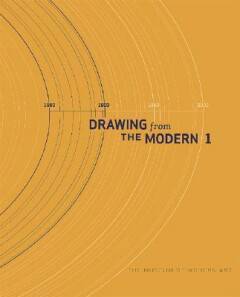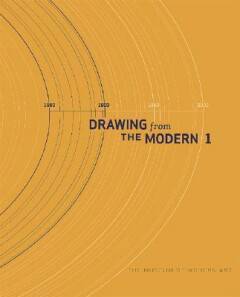
- Retrait gratuit dans votre magasin Club
- 7.000.000 titres dans notre catalogue
- Payer en toute sécurité
- Toujours un magasin près de chez vous
- Retrait gratuit dans votre magasin Club
- 7.000.0000 titres dans notre catalogue
- Payer en toute sécurité
- Toujours un magasin près de chez vous
34,95 €
+ 69 points
Description
Many of the key achievements in art of the last 125 years have been worked out on paper. From pictorial investigations that expanded the possibilities of vision to the invention of entirely new kinds of media, drawing has been the perfect laboratory for avant-garde experimentation. Drawing from the Modern traces such groundbreaking innovation through the unparalleled holdings of the drawings collection of The Museum of Modern Art. Drawing has historically been understood as a mark or line on paper--the record of a bodily gesture, an inscription of the action of the hand, an expression of the mind. Since the 1880s, however, artists have sought to interrupt these seemingly unbreakable links between mark, hand and imagination. Defying long-held definitions of drawing and rejecting traditional materials, modern artists invented a host of practices, altering not only the field of drawing but artmaking in general. Examining masterworks from the Museum's collection of nearly 7,000 works on paper in three chronological volumes beginning in the 1880s and continuing through today, Drawing from the Modern reconsider artists' repudiation of traditional drafting methods, assault on the use of the single sheet of paper, and introduction of new materials. Going to the heart of avant-garde innovation, all three volumes showcase new formal strategies, including collage, abstraction, chance, and the integration of text and image, as well as new subject matter, including the urban experience, the body and identity. Volume I, presented here, spans the period from 1880 to 1940, and includes work by such artists as Jean Arp, Hans Bellmer, Paul Cèzanne, Arshile Gorky, Georgia O'Keeffe, Odilon Redon and Kurt Schwitters. Volume II, available in Spring 2005, will cover 1940 to 1975, and Volume III, available in Fall 2005, will bring us from 1975 to the present day.
Spécifications
Parties prenantes
- Auteur(s) :
- Editeur:
Contenu
- Nombre de pages :
- 224
- Langue:
- Anglais
Caractéristiques
- EAN:
- 9780870706639
- Date de parution :
- 02-11-04
- Format:
- Livre relié
- Format numérique:
- Ongenaaid / garenloos gebonden
- Dimensions :
- 217 mm x 270 mm
- Poids :
- 1251 g

Les avis
Nous publions uniquement les avis qui respectent les conditions requises. Consultez nos conditions pour les avis.






